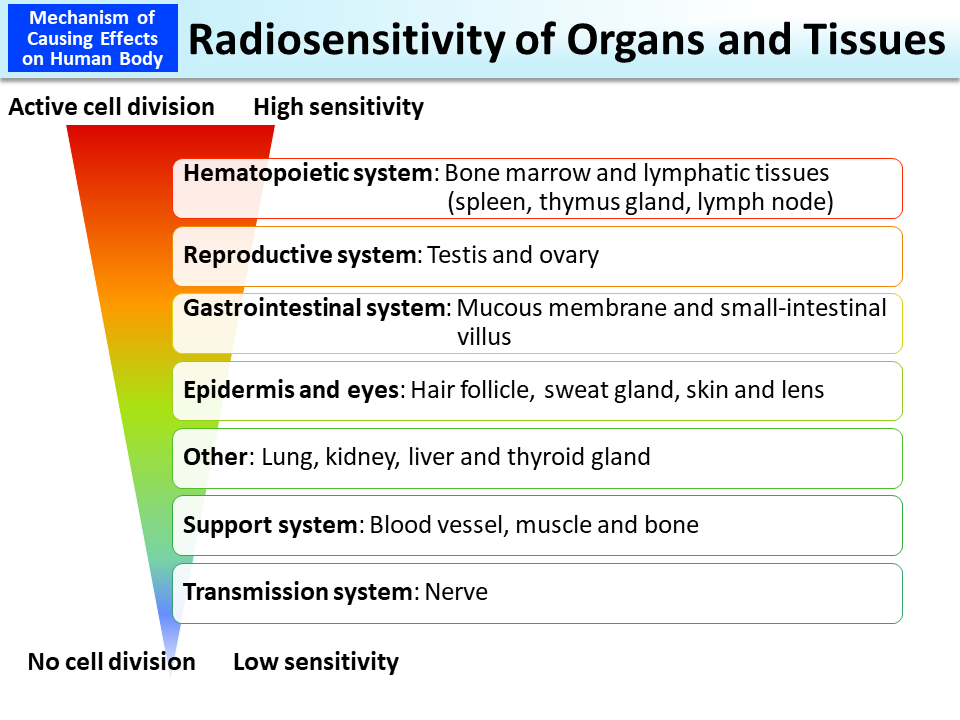Radiosensitivity of Organs and Tissues
Actively dividing cells that are less differentiated tend to show higher radiosensitivity. For example, hematopoietic stem cells in bone marrow are differentiated into various blood cells, while dividing actively. Immature (undifferentiated) hematopoietic cells that have divided (proliferated) from stem cells are highly sensitive to radiation and die due to a small amount of radiation more easily than differentiated cells.
As a result, the supply of blood cells is suspended and the number of various types of cells in blood decreases. In addition, the epithelium of the digestive tract is constantly metabolized and is also highly sensitive to radiation.
On the other hand, nerve tissues and muscle tissues, which no longer undergo cell division at the adult stage, are known to be resistant to radiation.
(Related to p.94 of Vol. 1, “Whole-body Exposure and Local Exposure,” and p.97 of Vol. 1, “Threshold Values for Various Effects”)
- Included in this reference material on March 31, 2013
- Updated on March 31, 2022

